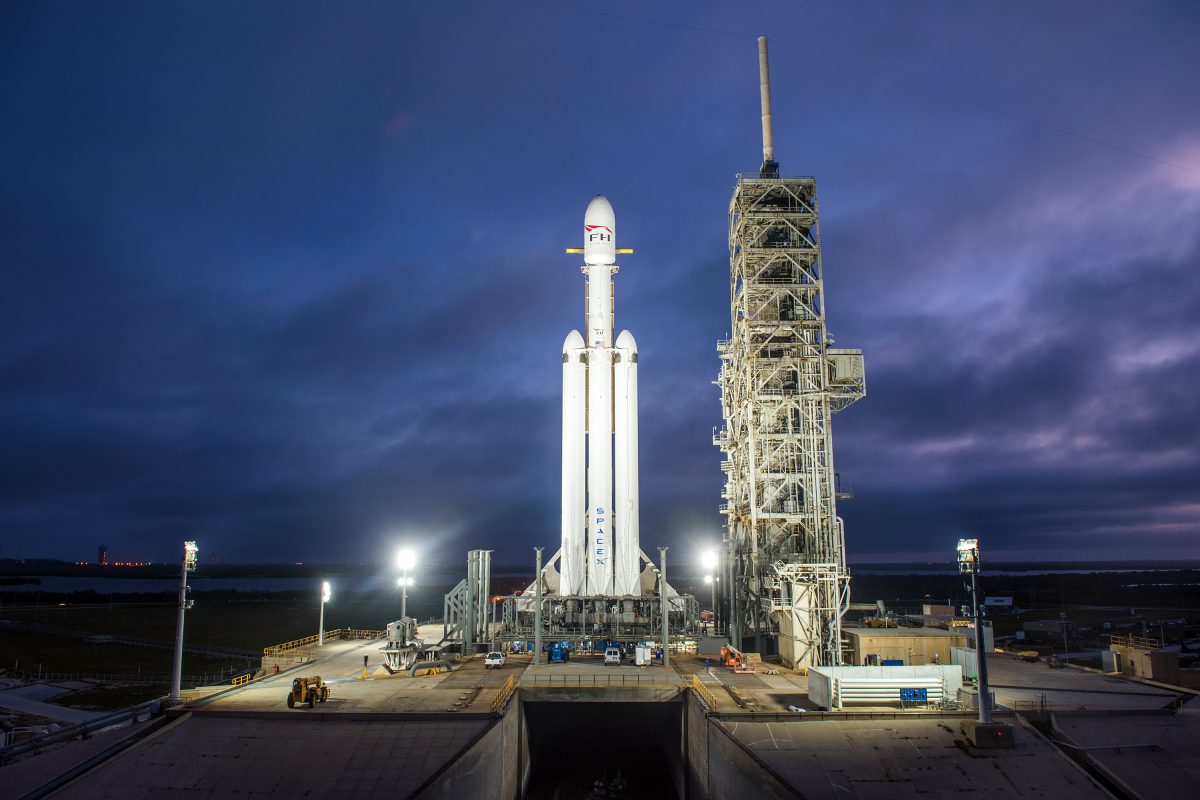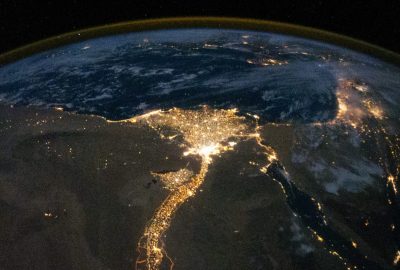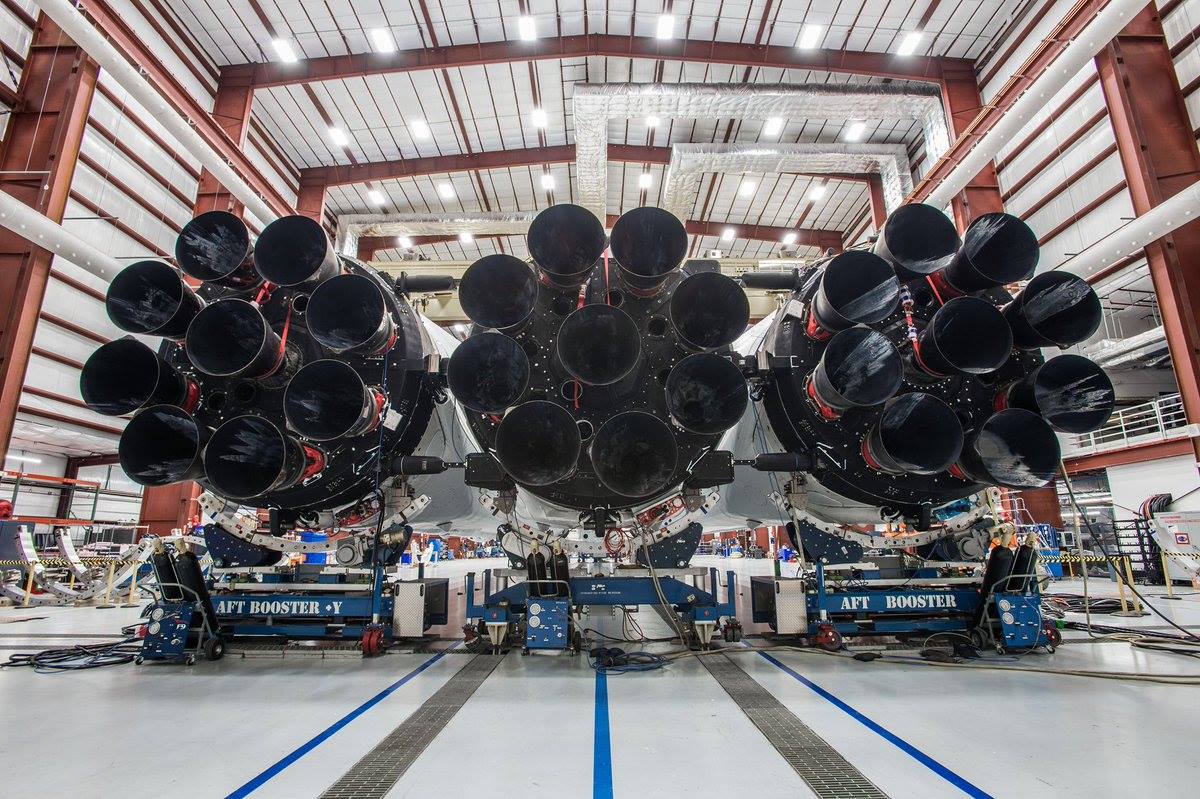CAPE CANAVERAL,FL–– On Wednesday, January 24th, SpaceX fired up its triple-booster Falcon Heavy rocket at Kennedy Space Center in Florida. At precisely 12:30 PM Eastern time, and In just under 12 seconds, the Elon Musk-founded private spaceflight company simultaneously lit up the heavy-lift rocket’s 27 Merlin engines. It was the most powerful engine or rocket test ever performed in Kennedy Space Center’s long and storied history.
My raw video of the #SpaceX Falcon Heavy static-fire at Kennedy Space Center. Come for the cloud plumes, stay for the sound.
A French space reporter just yelled “It’s like the 4th of July!” pic.twitter.com/vJssukqgIz
— Robin Seemangal (@nova_road) January 24, 2018
The event literally rocked the space coast and jolted an aerospace industry that’s been hotly anticipating the debut of a new launch vehicle with deep space capability and the ability to launch crewed missions to the Moon. SpaceX announced last year that two (presumably wealthy) individuals have made a deposit to fly atop Falcon Heavy in the Crew Dragon capsule but haven’t heard any updates from the company since.
Regardless, before those two unknown millionaires can go on their round trip in lunar orbit, Elon Musk will launch his used Tesla Roadster to a Mars elliptical orbit. Basically, the cherry red Roadster will chase Mars around the Sun for over a billion years––what SpaceX calls a “Red Car for the Red Planet”. Musk promised a fun dummy payload the Falcon Heavy demo flight and he certainly delivered. The Roadster will be playing David Bowie’s Space Oddity and will have a camera or two attached to film its deployment in orbit. When SpaceX first launched the Falcon 1.1, the dummy payload was a block of cheese.
While there is still no confirmation from SpaceX, reports hit Twitter today that point to Tuesday, February 6th for the maiden flight of the Falcon Heavy. However, as with all missions, expect that to slip a few days. And given the complexity of the Falcon Heavy rocket, expect SpaceX to be trigger-happy during the countdown, scrubbing the launch due to any issues. We’ll have a better read on weather conditions closer to launch.
The static-fire test was startling to many and it’s no surprise why: The Falcon Heavy generates up to 5 million pounds of thrust power at ignition––which if you are a few miles away, feels like a small earthquake. Upon firing up the engines, mountains of vapor rose high into the sky, even dwarfing the 18-story tall rocket. The exhaust was created from the burning of liquid oxygen propellant and it surrounded Launch Complex 39A, the pad leased by SpaceX from NASA for 20 years. The facility once saw the launches of the Saturn V rocket during the Apollo program and Space Shuttle missions to assemble the International Space Station and place the Hubble telescope. These previous launch vehicles, like the Falcon Heavy today, were the most powerful in operation in their respective eras.
Falcon Heavy hold-down firing this morning was good. Generated quite a thunderhead of steam. Launching in a week or so. pic.twitter.com/npaqatbNir
— Elon Musk (@elonmusk) January 24, 2018
Launch Complex 39A is no stranger to historic flights, once hosting the takeoff of Neil Armstrong and Buzz Aldrin to walk on the Moon. The Falcon Heavy isn’t quite as powerful as the Saturn V but it dwarfs its current competitor, ULA’s Delta-4 Heavy rocket, by double. Launch Complex 39A can withstand up to 8 million pounds of thrust at liftoff, so the Falcon Heavy is well within that range at its 5 million. During Wednesday’s thunderous static-fire, the rocket’s flames were contained to the pad’s flame trench which is built to absorb the heat and acoustics associated with such a powerful vehicle.
It’s yet to be seen how 39A will be affected by the Falcon Heavy’s actual launch but SpaceX spent about 20 million refurbishing the pad and getting it ready for both Falcon Heavy flights and upcoming human launches atop the upcoming Block-5 Falcon 9, which carries more thrust than the current Falcon 9. In Elon Musk’s presentations on how SpaceX plans to colonize Mars, Launch Complex 39A is shown as the facility where they will launch the conceptualized “Big Fucking Rocket” passenger ship heading to the red planet.
Elon Musk originally unveiled plans for the massive rocket back in 2011 during a press conference in Washington DC. Musk floated the idea of launching the beast sometimes in 2013-2014 but development delays and two explosions of the Falcon 9 rocket in 2015 and 2016 ultimately pushed the rocket’s debut. Last summer, during a conference in Washington DC, Musk again sold the idea of the Falcon Heavy and claimed the company will fly in November. Routine delays and priority for paying customers ultimately pushed it again. SpaceX President Gwynne Shotwell expressed her desire to get the vehicle off the ground before the end of the year but unfortunately, it didn’t happen.
More delays came after Falcon Heavy was finally brought out to 39A and raised verticle on the pad. SpaceX performed a few wet dress rehearsals day after day which allowed them to follow through with every operational step that leads up to engine firing and launch. During one of these rehearsals, a minor issue with ground equipment was detected. After a few more days of delays, SpaceX was put on hold while its competitor, United Launch Alliance, lofted an Air Force satellite to orbit from their neighboring Pad 41. While Cape Canaveral is becoming a busier and busier spaceport, every agency still requires assistance from the Air Force’s 45th Space Wing and Eastern Range to oversee and assist with all launch and static-fire operations. They can only serve one launch provider at a time.
The ULA Atlas V rocket was slated for liftoff on Thursday, January 18th, pushing SpaceX’s static fire to Friday the 19th. But, the Atlas V launch was scrubbed due to a technical issue with the rocket, pushing it into a Friday time slot––and pushing SpaceX out. No big deal right? SpaceX can just move to the next day, right? Wrong. Fortunately for ULA, they successfully launched Friday night. Unfortunately for SpaceX, because of disagreements between the Democratic party and President Donald Trump, the Government shut down that same night.
What did this mean for Cape Canaveral and especially SpaceX? It means they can’t operate. Personnel from the 45th Space Wing and Easter Range were furloughed and unable to assist with launches or static-fires.
SpaceX put out a statement explaining the situation.“We remain hopeful that the Congress will quickly resolve their differences and put our partners in the Air Force and NASA back to doing their important work as soon as possible. This shutdown impacts SpaceX’s Falcon Heavy demonstration, which is critical for future NSS missions,” said SpaceX in a statement to the media. “It also impacts critical missions for our customers, including important international allies scheduled to launch shortly from Cape Canaveral and Vandenberg Air Force Base, as well as upcoming missions this spring to resupply the International Space Station.”
As we know now, The Government shutdown ended by Monday with a deal that allocated budget spending until February 8th, allowing the 45th Space Wing to return to work which allowed SpaceX to finally fire up the Falcon Heavy. The ultimate question now is can SpaceX get its new rocket off the ground before February 8th, when the Government could shut down again?
Image Credit: SpaceX









